A cup of hot chamomile tea is the perfect way to end to any day, as it helps to calm the mind and relax the spirit. I know that I enjoy it most evenings. Beyond its ability to tame frayed nerves, chamomile has many other benefits, both for the garden and for us. I love growing chamomile for so many reasons! Here are my top ten reasons to grow chamomile in your herb garden.
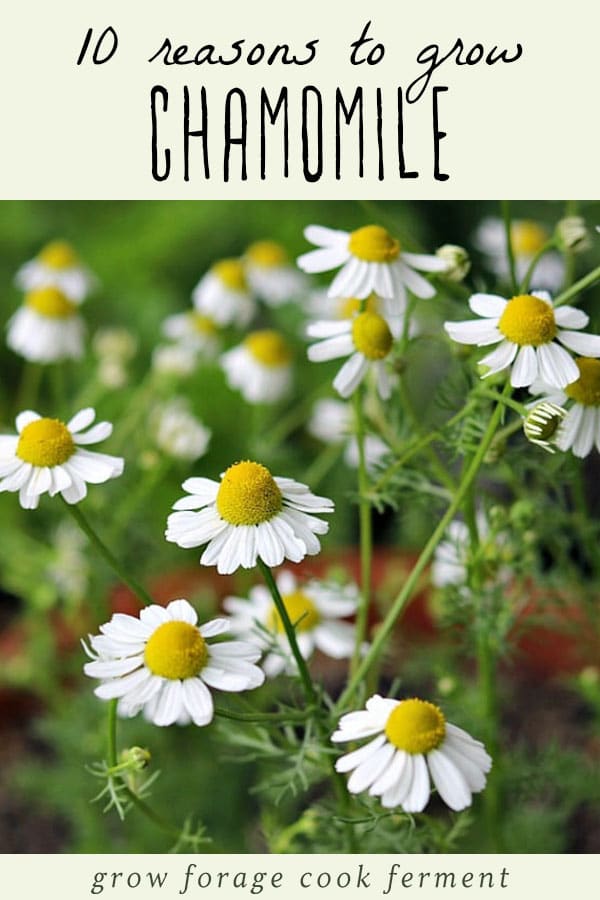
Want to save this post for later?
10 Reasons to Grow Chamomile
Chamomile is Easy to Grow From Seed
Not all flowers are easy to grow from seed, but chamomile is one exception. It also reseeds itself very readily, so will often come back year after year on its own.
The tiny seeds need sunlight to germinate, so spread them on the surface of the soil and gently tamp them down. Keep the soil damp and they will usually sprout within a week or so.
Here is more info on growing chamomile.
Chamomile is an Excellent Companion Plant
Chamomile is naturally antibacterial and antifungal, so it is the perfect plant for companion planting. Plant them around your apple or other fruit trees to prevent fungal infections.
It is especially beneficial to plant chamomile around brassicas (broccoli, kale, cabbage, etc.), onions, beans, and cucumbers. If you have chamomile plants next to other herbs like basil, rosemary, and mint it will help to increase their oil production, making them more potent.
Here is more info on using chamomile and other plants for companion planting.
Chamomile Attracts Beneficial Insects and Pollinators
In conjunction with being a companion plant, chamomile helps to attract beneficial insects and pollinators to the garden. Hoverflies, beneficial wasps, ladybugs, and honey bees are all attracted to chamomile.
As an added benefit, chamomile has also been known to deter mosquitoes!
Chamomile Tea Can Be Used in the Garden
Chamomile tea isn’t just good for us, it’s also good for our garden! Brew some up and use it in a spray bottle on seedlings to help prevent damping off, a common fungal infection.
It’s also a natural insecticide for unwanted bugs like aphids, but won’t harm bees.
You can also use chamomile tea as an organic fertilizer for plants, similar to how I use comfrey tea in the garden.
Chamomile Plants are a Green Mulch and Good for Compost
Since chamomile is high in nutrients and grows a large amount of greenery, it makes a great mulch for chopping and dropping. This simply means cutting the plant down at the end of the season and leaving it in place as a natural mulch.
Chamomile plants are also good for the compost pile due to its high mineral content. Read more about herbs for the compost pile here.
Chamomile Flowers are Edible (and Delicious!)
I love edible flowers, and chamomile are one of my favorites! They aren’t overpowering like some can be, and fresh chamomile flowers have a certain sweetness to them that can’t even be described.
They are particularly nice in desserts like this strawberry chamomile cake or these lemon chamomile shortbread cookies.
I think I’m going to have to try these honey chamomile popsicles sometime soon, too!
Chamomile Promotes Relaxation and Sleep
Chamomile is a wonderful herb for relaxation and sleep, which is why it’s so popular as an evening tea. As a nervine herb, it also helps to relieve stress and anxiety.
Beyond tea, it also has powerful aromatherapy benefits for relaxation and stress.
Chamomile is Beneficial for Digestion
Another powerful medicinal property of chamomile is its action on the digestive tract. It is anti-inflammatory and antispasmodic, making it soothing for the entire digestive system. It also helps to reduce gas and stomach upset.
Drink a cup of chamomile tea after a meal to help with digestion.
Chamomile is Great for Skin and Hair Care
Chamomile is a common ingredient in skin and hair care products as it is soothing and good for itchy and very dry skin. Make your own soap with this chamomile almost castile soap recipe, or try this lovely sounding chamomile lavender lotion.
It can also be made into a hair rinse and may even help to lighten the hair naturally.
Chamomile is a Children’s Herb
One of chamomile’s best qualities is that it is an excellent and safe herb for children. Chamomile is high in vitamins and minerals that are essential for a growing body.
Chamomile tea is especially calming for children and may help them relax and sleep. You can use it in a calming chamomile tea bath that is also great for the skin.
It can help with an upset stomach and digestion, and may even provide some relief to teething babies.
Chamomile is an amazing herb that I always have growing in my herb garden so that I can utilize its many benefits. I hope these reasons to grow chamomile will inspire you to grow some yourself!
If you don’t want to grow it, but still want to enjoy its benefits, I recommend purchasing chamomile from Mountain Rose Herbs. They are my favorite place to get high quality, organic dried herbs!
What is your favorite way to use chamomile?

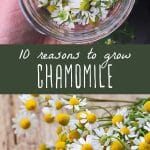
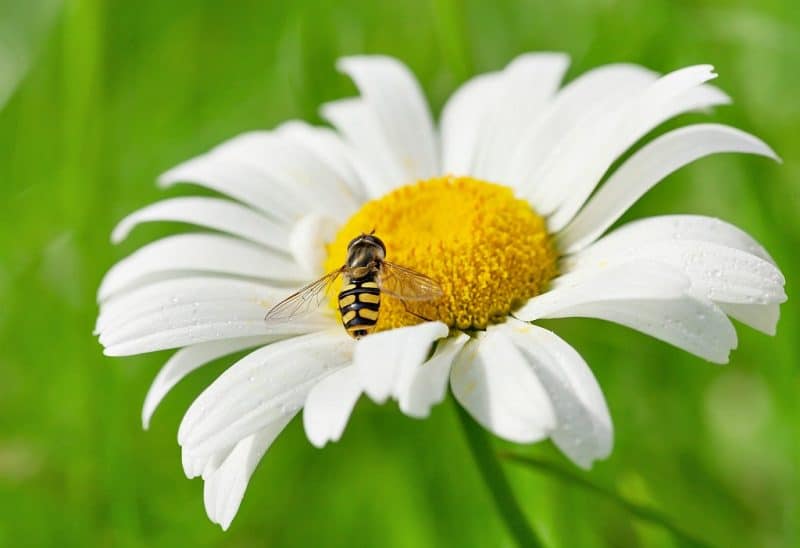
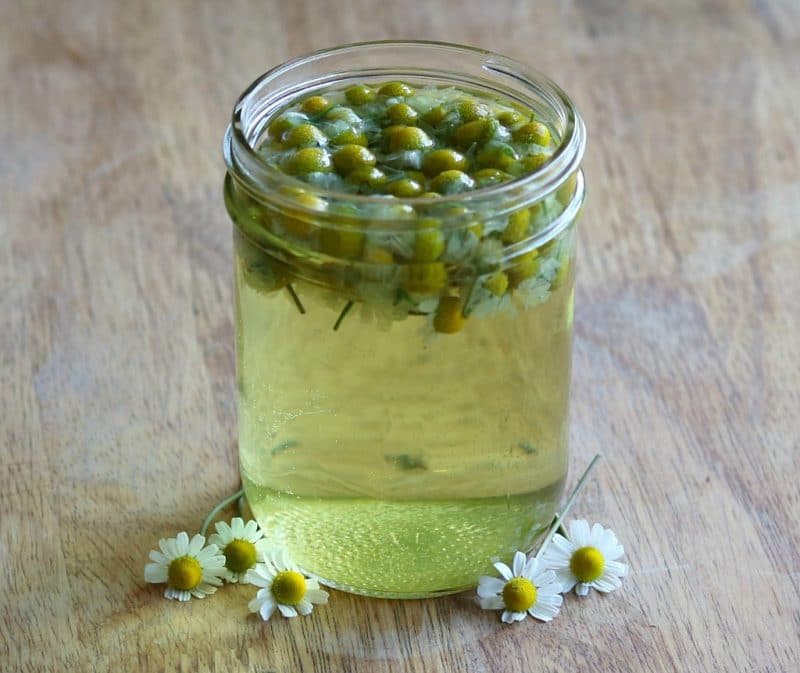
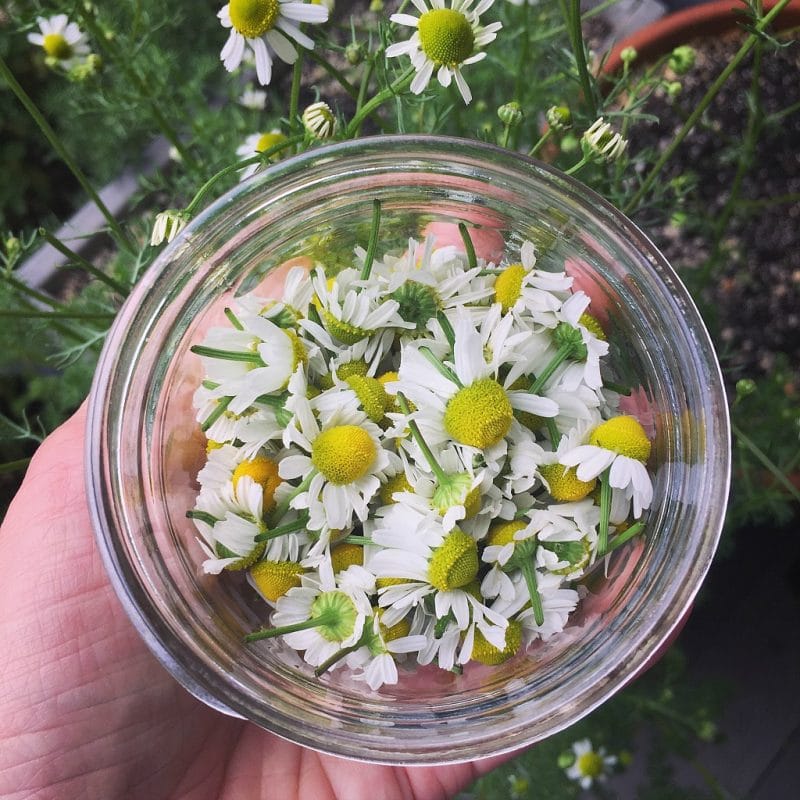


I am in England and I have lawn Chamomile, it smells so good when you walk on it also when you cut your grass , and tolerates all our weather conditions from lots of rain to very dry ,staying green when the grass goes brown , having read this I will plant some in my flower beds
In zone 4b, I planted chamomile two springs ago in a spot where my cucumbers had a fungal disease, then I transplanted new starts in various places around the garden because I loved it so much. I let the seeds drop in fall and it was the first flower to pop up months before the last frost date. I let it grow wild until it was time to plant veggies, then I chop and dropped into the compost bin. I even plant it between rows of veggies and let it grow all summer long. No more fungal issues and we have wonderful tea whenever we need it.
Should you use Roman or German chamomile? Or are both fine?
You can use whichever you prefer.
Is chamomile plants can grow in the Philippines
Hi there. I looked on Google and yes, you can.
I planted a chamomile last fall and this spring it came up and the frost doesn’t faze it. Covered in flowers. Very nice looking plant. I found this site by searching to see if chamomile self pollinates.
Thanks for sharing, Craig. Chamomile is one of my favorite plants!
Very informative! Thanks
I love chamomile, this year, because we had a lot of rain for our region, finally I had a lot of plants. The aroma when you walk around them is the best! I harvested flowers for teas and future concoctions. Besides its medicinal uses, I just love the little flowers, so adorable, it actually pains me to cut them.
Which variety of chamomile do you use for lotion
We LOVE camomile! We also use it as a poultice. Our cat got bit by something and it got very infected all across her back. We did a camomile poultice for a few days and she was good as new. My son grabbed a cactus when he was 1.5 and his hand ended up being infected. We put camomile on it and never had to go to the doctor :) I love that it’s gentle enough for babies! One of my favorite herbs! Thank you for this article!
I grew a camomile plant from a camomile teabag…. And now I want more
Are the green parts of a chamomile plant edible?
I think the stem and leaves are edible but have a different taste.
Is this also called a daisy plant? It looks the same! Thanks!